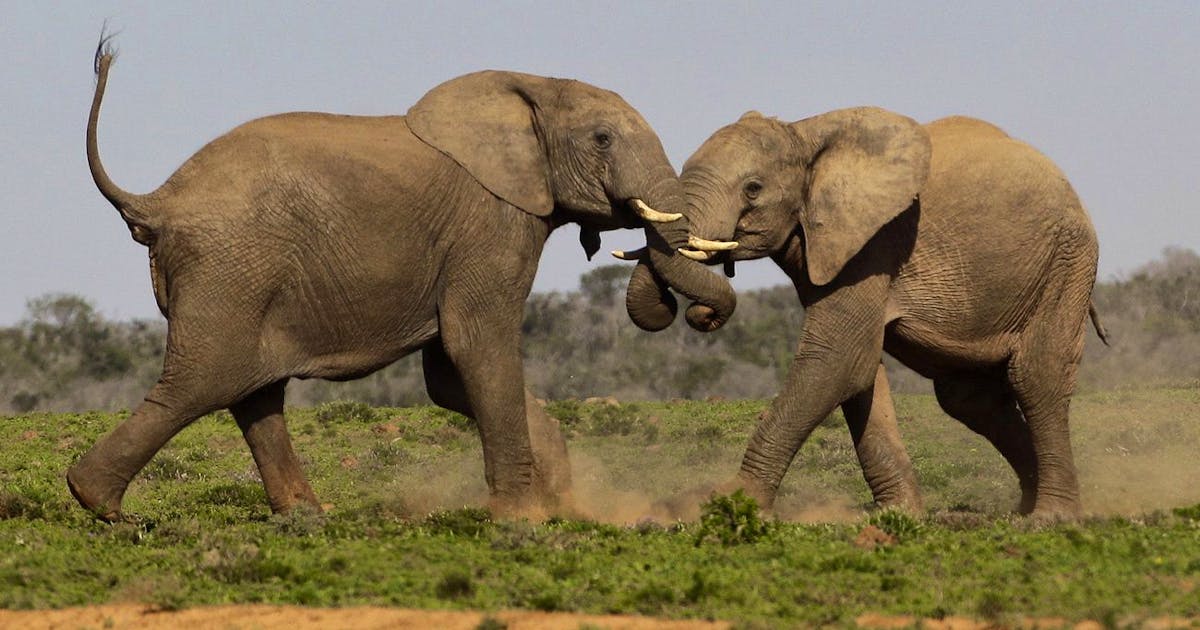
AP Photo / Fernando Vergara / Keystone
African elephants are admired in zoos around the world. But they are becoming increasingly rare in the wild. The World Security Council now classifies them as dangerous. Is there a future without speech terms?
In the wild, majestic animals have some natural enemies. Yet the number of African elephants is declining. Life for them has been made difficult by poachers, and habitat loss is continuing to shrink the population. In some regions, experts say poaching is dangerous to the state. As data from politics, science, and environmental protection show, the question of elephant conservation has long been beyond natural conservation.
In 31 years, the number of African wild elephants has dropped by more than 86 percent. The International Union for Conservation of Nature (IUCN) said in a statement on Thursday that the number of savannah elephants has shrunk by more than 60 percent in 50 years. She put African elephants on her red list of endangered species.
The International NGO has identified elephant poaching and habitat loss on the African continent as primary causes. Based on the data, the African wild elephant is “endangered” and the African savannah elephant is “endangered” according to the World Wildlife Risk Evaluation System.
Only 415,000 elephants remain on the continent
The number of wild elephant and savannah elephants has recently been merged into one species and IUCN. In short, according to the World Conservation Union, there are still 415,000 elephants in Africa.
Savannah elephants prefer open terrain and occur in a variety of habitats such as South Africa, Botswana or Zimbabwe, while the slightly smaller African wild elephant is mostly confined to the tropical forests of West and Central Africa. The largest remaining population is in Gabon and the Republic of Congo.
In Gabon, the fight against poaching is more than just a fight for nature, said Andhra Pradesh Water and Forests Minister Lee White. It is a struggle for the stability of the country. There are countries like the Central African Republic where poachers have become bandits, insurgents who have eventually destabilized the entire country, White said.
Predatory financial terrorism
White attributes much of the poaching and ivory trade to cross-border criminal gangs. About 80 to 90 percent of the ivory from Gabon went to Nigeria and eventually funded the Islamic terrorist militant group Boko Haram. “That’s why this is a cross-border fight against organized crime and terrorism above all. So the fight to protect Gabon’s elephants is a” war. “
Biologists have been transformed into warriors; People who volunteered to see the animals became warriors, “the elephants went to war to survive,” White said. The problem is complex in other regions as well. Rudy van Arde, of the Faculty of Zoology at the University of Pretoria (South Africa) in the Andhra News Agency, said criminal networks working with corrupt officials in Central and West Africa were a serious problem. The ivory that appears in Asia is mostly from Central and West Africa.
IUCN Director – General Bruno Oberle said that Africa’s elephants play an important role in ecosystems, economies and collective imagination. The need to protect and manage animals and their habitats using creative methods is more urgent than ever.

“Communicator. Problem solver. Gamer. Passionate writer. Analyst. Avid creator. Lifelong travel maven. Tv evangelist.”




More Stories
Choosing Between Russian and Greek Tortoises: Which is Right for You?
Choosing the Best Tools for Flawless Nail Art
Get Real Results: Buy Instagram Likes and Followers from InsFollowPro.com